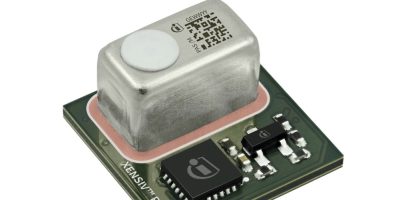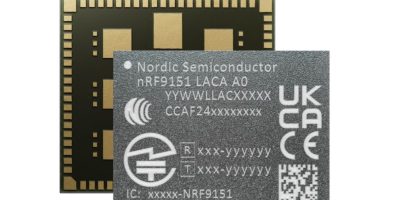In order to further drive decarbonisation, improving the energy efficiency of buildings is crucial, as they contribute significantly to global energy consumption and carbon emissions. Innovative solutions are needed to optimise energy consumption while ensuring a healthy indoor environment. Infineon is addressing this need with the introduction of the new XENSIV PAS CO2 5V sensor. It is based on the Photoacoustic Spectroscopy (PAS) technology and improves energy efficiency by adapting ventilation to actual occupancy, thereby reducing the carbon footprint of buildings. This makes the device suitable for applications such as heating, ventilation, and air conditioning (HVAC) systems as well as room controller and thermostat units in commercial and residential buildings. It can also be used for IoT and consumer devices such as smart lighting, air purifiers, conferencing systems, and smart speakers, as well as emerging applications such as smart horticulture and smart refrigerators.
“Environmental sensing is an important pillar of Infineon’s sensor portfolio,” said Andreas Kopetz, VP Ambient Sensing at Infineon. “CO2 sensors play an increasingly important role in smart homes and buildings by continuously monitoring indoor air quality and adjusting ventilation systems accordingly. Our XENSIV PAS CO2 5V is a sensor solution that ensures a healthier living environment for occupants and enables significant energy savings for greater sustainability.”
The XENSIV PAS CO2 5V provides accurate air quality data in real time. Its miniaturised form factor of 14×13.8×7.5 mm³ is identical to the size of the XENSIV PAS CO2 12V sensor and allows seamless integration into a wide range of applications. This makes it easy to adopt dual designs or maintain the same design strategy for both product variants. Compared to the 12V sensor, the 5V version comes with a 5V power supply which further simplifies installation. Moreover, it offers a significantly faster response time of 55 seconds, down from 90 seconds (12 V). This improvement enhances efficiency across various applications, allowing for quicker data acquisition and more responsive performance in dynamic environments. The sensor’s design is dust-proof in accordance with ISO 20653:2013-02, which extends the lifetime of the device in dusty environments and minimises maintenance requirements. In addition, the UART, I²C and PWM interfaces enable seamless integration with microcontrollers and other digital systems, simplifying the design and development process. Ultimately, with its robust performance, the sensor meets the performance criteria of the internationally recognised WELL Green Building Standard, enhancing both environmental sustainability and property value.
All major components of the XENSIV PAS CO2 5V sensor are developed in-house according to Infineon’s high-quality standards. Among others, this includes a dedicated microcontroller that runs advanced compensation algorithms to provide direct and reliable ppm readouts of real CO2 levels. The available configuration options make the sensor one of the most versatile plug-and-play CO2 sensors on the market. They include a dedicated ABOC (Automatic Baseline Offset Calibration), pressure compensation, signal alarm, sample rate and early measurement notification, which are especially useful for power consumption management. The SMD package, delivered in tape and reel, allows for easy assembly, even in high-speed, high-volume manufacturing.







